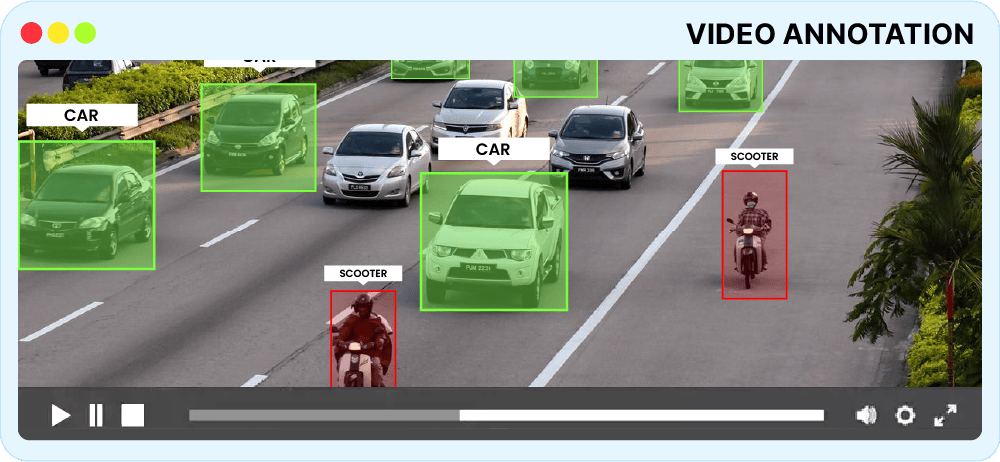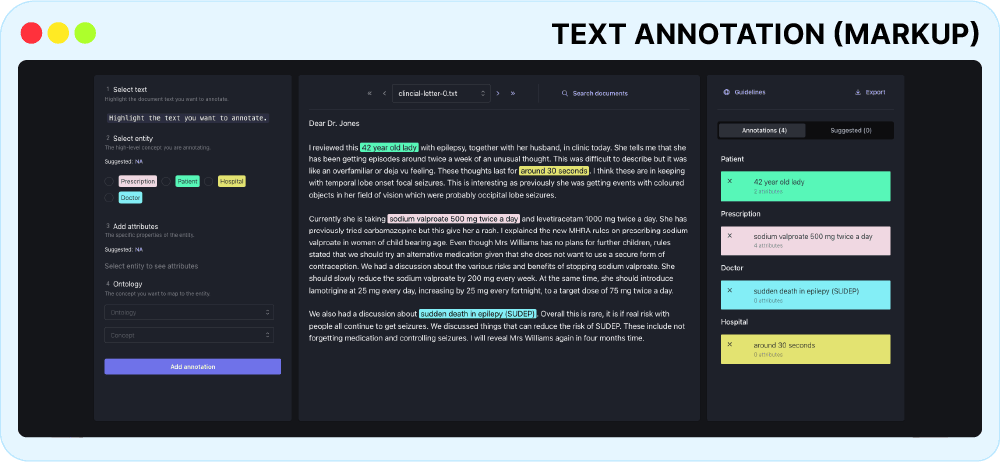Imagine trying to teach a child to recognise different animals without ever showing them a picture or describing their features. Sounds impossible, right? This is precisely the challenge faced by machine learning models without data annotation.
Data Annotation is the unsung hero of machine learning which converts chaotic raw data into clear, structured and labelled datasets that models can learn, understand and excel. In this article, we will uncover the major role of data annotation in transforming machine learning and its significance.
What is Data Annotation?
Data Annotation is a process of labelling and tagging data presented in any form to help machine learning algorithms understand what they are. The data can be in the form of image, video, audio or text. As our world is quickly adopting Artificial intelligence, we must know how these things work. This process ensures AI systems can understand and interpret the amount of raw data they are receiving.
For Example, Annotated images are used by social media apps and platforms to train facial recognition algorithms. Key features of the face, such as the eyes, nose, and mouth, as well as the overall face boundary, are labelled by annotators.
Similarly, chatbots and voice assistants like siri use annotated text data to respond to customer queries. The text annotation involves labelling of data like part of speech and sentiments etc. Understanding of human language either spoken or written is known as Natural language processing (NLP).
Importance of Data Annotation
Data annotation is a fundamental process in the development of AI models and systems. Without data annotation a system cannot work properly. By strictly labelling each image, text, audio or video data, it enables AI models to learn patterns and performs tasks with greater precision. This process also streamlines tasks and reduces time in deploying AI models and systems. Through accurate data annotation, model accuracy can be increased as well as enhancing user experience.
Types of Data Annotation:
Imagine an artist’s palette, each colour representing a different type of data annotation that brings the canvas of artificial intelligence to life. Similarly, teachers employ various tools for student learning, data annotators utilise different types of labels to educate AI systems.
There are various types of data annotators
1. Image Annotation
AI models are trained with labelled images in image annotation. This process involves adding metadata, captions and keywords to numerous images, which increases the accuracy of AI models.
Many applications such as computer vision use image annotation to successfully interpret data and take further actions.
Tools
Computer Vision Annotation Tool (CVAT)
CVAT is an open source image and video annotation tool which supports complex images and video annotations. It supports annotation methods like boundboxing, polygons and polylines. It is used in labelling objects for complex tasks like image segmentation etc.

2. Video Annotation
Like image annotation, video annotation also uses labelled images but on a frame by frame basis. Through this process, AI models algorithms are designed that can track the movement of the objects.
Video annotation is helpful in object tracking and traffic management systems etc.
Tools
Scale AI
Scale AI provides a platform where diverse datasets, including images, videos, and text, can be accurately annotated, simplifying the process of AI model training and deployment for businesses.
It is an open source, end to end data labelling tool which supports complex video annotation and ensures quality assurance.

3. Text Annotation
Text Annotation is a process in which part of text is labelled and categorised for machines and AI models to understand. This process involves adding metadata and labels to the part of text.
Annotations like Name entity recognition (NER), sentiment annotation and intent annotation are used to train AI models.
Tools
Labelbox
Labelbox is a tool utilised for annotating data, especially in AI projects, where various types of data such as images, videos, and text can be labelled using methods like bounding boxes and polygons. Collaboration is facilitated, alongside version control, and integration with other platforms is supported.

Manual vs Automatic Data Annotation
Manual Data Annotation
The process in which data is annotated manually with the help of human is known as Manual data annotation or human data annotation. As data is carefully labelled manually, it increases the accuracy of AI models.
Pros:
- More Accuracy and Quality:
Humans possess a deeper understanding of context and variations, resulting in more precise annotations, especially for complicated or subjective tasks.
- Versatility:
Humans can readily adapt to new data types or changes in annotation criteria, making them suitable for diverse datasets.
Cons:
- Costly and Time-Consuming:
Manual annotation requires human resources, which can be expensive and time-consuming, especially for large datasets.
- Dependency on expertise:
In manual annotation, the difference of expertise can lead to significant challenges, particularly in complex tasks that require specialised domain knowledge, thereby limiting scalability and increasing operational costs.
Automatic Data Annotation
Automatic data annotation involves automatically applying labels, tags, or metadata to data using algorithms or machine learning techniques, analysing and categorising based on predefined rules or patterns without manual intervention.
Pros:
- Efficiency:
Automatic annotation can process large volumes of data quickly, reducing the time required for labelling compared to manual methods.
- Consistency:
Algorithms apply consistent rules and criteria to annotate data, reducing variability compared to human annotators.
Cons:
- Quality Control Issues:
Automatic annotation can sometimes lead to inaccuracies or inconsistencies in the labelled data, especially in complex or ambiguous contexts.
- Cost of Implementation:
Implementing automatic annotation systems may require significant initial investment in technology, infrastructure, and expertise.
Conclusion:
In conclusion, whether we choose manual annotation or automatic annotation, ultimately it’s not about labelling the data, it’s about building a foundation that how AI operates and is continuously transforming our world.
Need accurate data for your AI projects? Contact us and learn how our expert data annotation services can ensure quality and reliability.

